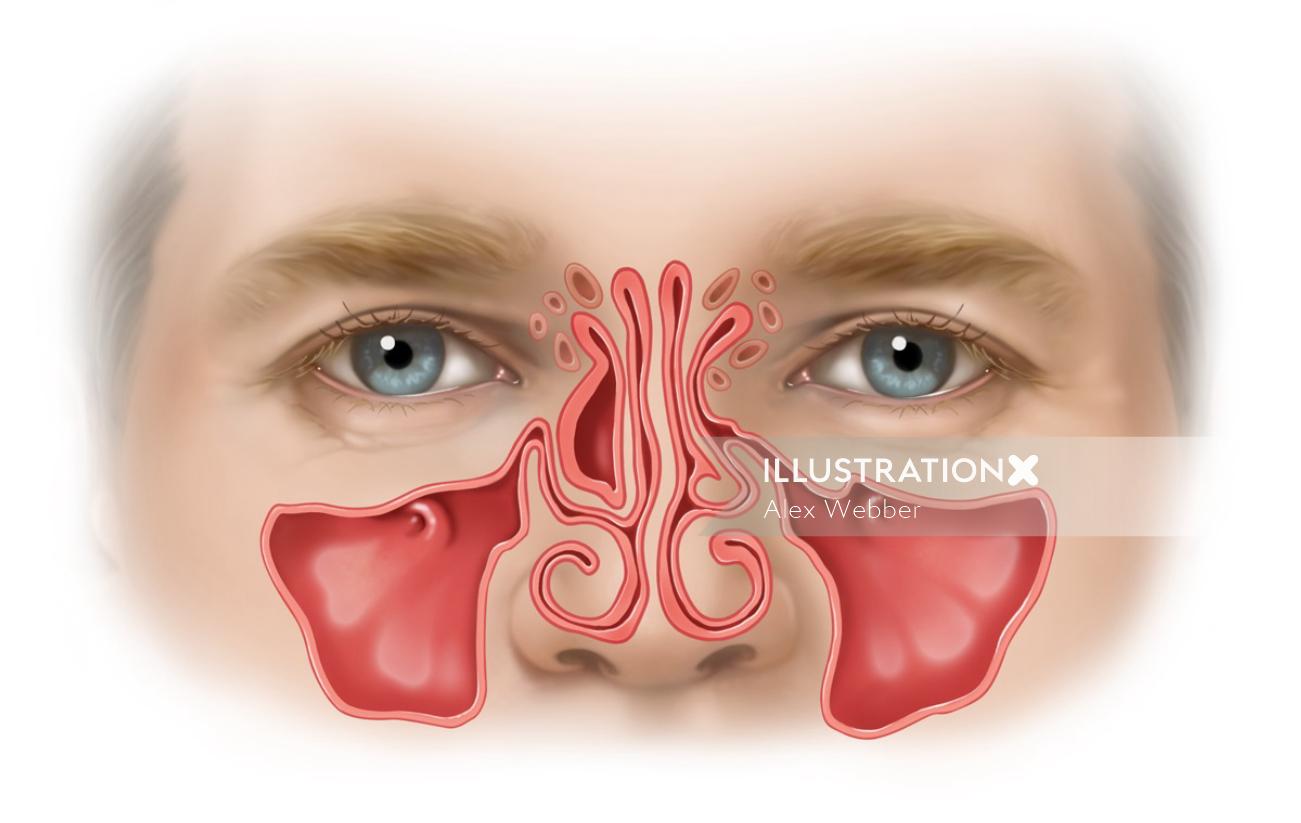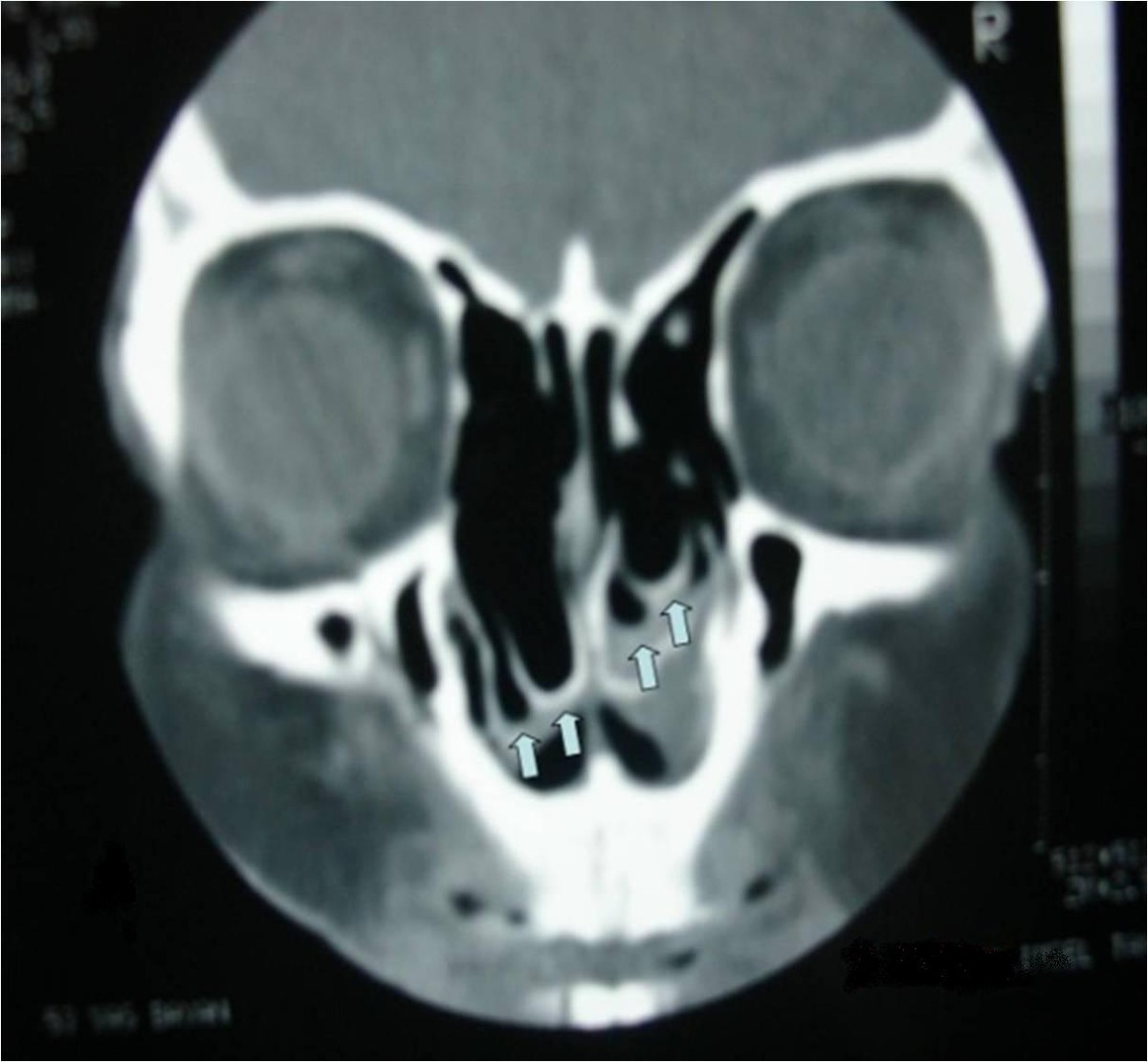
Bilateral concha bullosa with domination of the right concha (red arrows). Download Scientific
Concha bullosa. A concha bullosa is a pneumatized (air-filled) cavity within a nasal concha, also known as a turbinate. [1] Bullosa refers to the air-filled cavity within the turbinate. [1] It is a normal anatomic variant seen in up to half the population. Occasionally, a large concha bullosa may cause it to bulge sufficiently to obstruct the.

Image
The larger a concha bullosa grows, the more pain and discomfort you're likely to feel. The most common symptoms include: pressure or pain around your sinuses and the area around your eyes.

Bilateral bulbous concha bullosa. Download Scientific Diagram
Epidemiology. Concha bullosa is a normal variant and is one of the most common variations of sinonasal anatomy, it is identified in ~35% (range 14-53%) of patients 1 . The wide range of prevalence is attributable to variability in the definition used for the diagnosis (see below).

(PDF) Concha bullosa. A radiological study and a new classification
Occasionally, the bony area of the middle turbinate can develop a pocket of air, otherwise known as concha bullosa. This is the same process of our sinuses growing from our childhood into our adulthood. If a concha bullosa is present, the volume of the air pocket creates additional obstructive issues for the nasal passages both in terms of.

Concha bullosa Do you suffer from persistent nose block?
An enlarged concha bullosa may obstruct the middle meatus or infundibulum. Headaches, orbital pain, exophthalmia, nasal discharge, postnasal drip, nasal obstruction, and hyposmia are all possible symptoms of a concha bullosa mucopyocele. In our patient, the main symptom was the recurring headaches. Mehle and Kremer found that patients with.

Concha Bullosa Signification, Symptômes et Traitements
Introduction A pneumatized turbinate, also called concha bullosa, is a normal anatomical variant of the paranasal sinus region. Depending on the site of pneumatization, the concha is classified into extensive, bulbous or lamellar type. The middle turbinate concha bullosa has been implicated as a possible etiological factor in chronic sinusitis.

CONCHA BULLOSA en tomografía😯 YouTube
Aim: To assess the frequency and the endoscopic treatment of the middle turbinate pneumatization or concha bullosa. Materials and Methods: Forty-nine patients (26 males and 23 females) with sinusitis and headache symptoms and axial and coronal computed tomographic scans of the paranasal sinuses and who had an endoscopic examination visit in the outpatient department between January 2005 and.

Concha Bullosa Diagnosis, Complications, and More
A concha bullosa is a pneumatized middle turbinate and has a reported prevalence of 34%19 ( Fig. 2.10 ). A concha bullosa is readily identified on CT, but endoscopic recognition may be difficult. An unremarkable middle turbinate during endoscopy may show extensive pneumatization on CT. Conversely, an endoscopically large middle turbinate may.

Concha Bullosa Aerated Turbinate Definition and Treatment
A concha bullosa is when a nasal turbinate becomes pneumatized, or filled with air. Most people have three separate turbinates on each side of the nose. A concha bullosa most commonly occurs in the middle turbinate. The majority of the time, a concha bullosa is a normal anatomic variant that does not cause symptoms.

Concha Bullosa Dento Metric Radiología Dental, Oral y Maxilofacial
ICB is normally asymptomatic and diagnosed incidentally upon imaging 2 - 5. It can, however, when there is extensive pneumatisation, cause nasal obstruction 1 - 5 9 12 as in our case. Other symptoms associated with ICB are nasal discharge, nasal discomfort with coexistent infection, headache and epiphora 8 12 - 14.

Concha Bullosa PreOp [CT scan] • Image •
Introduction. Concha bullosa (CB) is a pneumatization of the middle turbinate, it is a very common anatomical variation with a prevalence ranging from 14% to 53%. 1 The exact cause is still unknown. 2 The most accepted hypothesis is the expansion of sinus pneumatization into the turbinate during the intrauterine period. 3 The second hypothesis is the fusion abnormality in intrauterine development.

Concha bullosa bilateral Image
The middle turbinate can be pneumatized in 14-53% of the population. 1-4 This air-filled cavity, known as a conchae bullosa is usually asymptomatic; however, it may develop into a mucocele or a mucopyocele if infected. 1,3,5-7 Either of these entities can lead to sinonasal symptoms, such as headache, nasal congestion, rhinorrhea, anosmia, and snoring. 7,8 In addition, results of a.

Concha Bullosa Illustration by Alex Webber
Pneumatized middle turbinate (Concha bullosa) is one of the commonest intranasal anatomical variants. Surgery is the effective method to control symptomatic concha bullosa, however, still no clear definition for the best surgical technique. The aim of our study to assess and compare the short-term outcomes of crushing and lateral laminectomy with and without mucosal preservation in the.

Bilateral concha bullosa with domination of the right concha (red arrows). Download Scientific
Diagnosis. Concha bullosa is best diagnosed with a CT scan and is estimated to be found in 16 to 53 out of 100 cases. The turbinates will normally show up as a light gray color, however, in the case of concha bullosa, there will be a black pocket of air in the middle of the gray turbinates. The views of the scan will also allow your healthcare.

Concha bullosa on the left side on a coronal CBCT slice Download Scientific Diagram
Concha bullosa related headache disability. Eur Rev Med Pharmacol Sci2015 Jul;19 (13):2327-30. E Cantone 1 , G Castagna , I Ferranti , M Cimmino , S Sicignano , F Rega , V Di Rubbo , M Iengo. 1. 26214765. Objective: Rhinogenic headache (RH) is a headache or facial pain syndrome secondary to mucosal contact points in the sino-nasal cavities, in.

A patient presenting with concha bullosa in another concha bullosa a case report Journal of
Another less-know reason for blockage of the nose and sinus drainage pathways is an anatomical variant named Concha Bullosa. This is a condition that affects the middle turbinates, which are the midportion of the side wall of the nose, where most of our sinuses drain. Typically, the middle turbinates have an inner core of thin, single-layered.